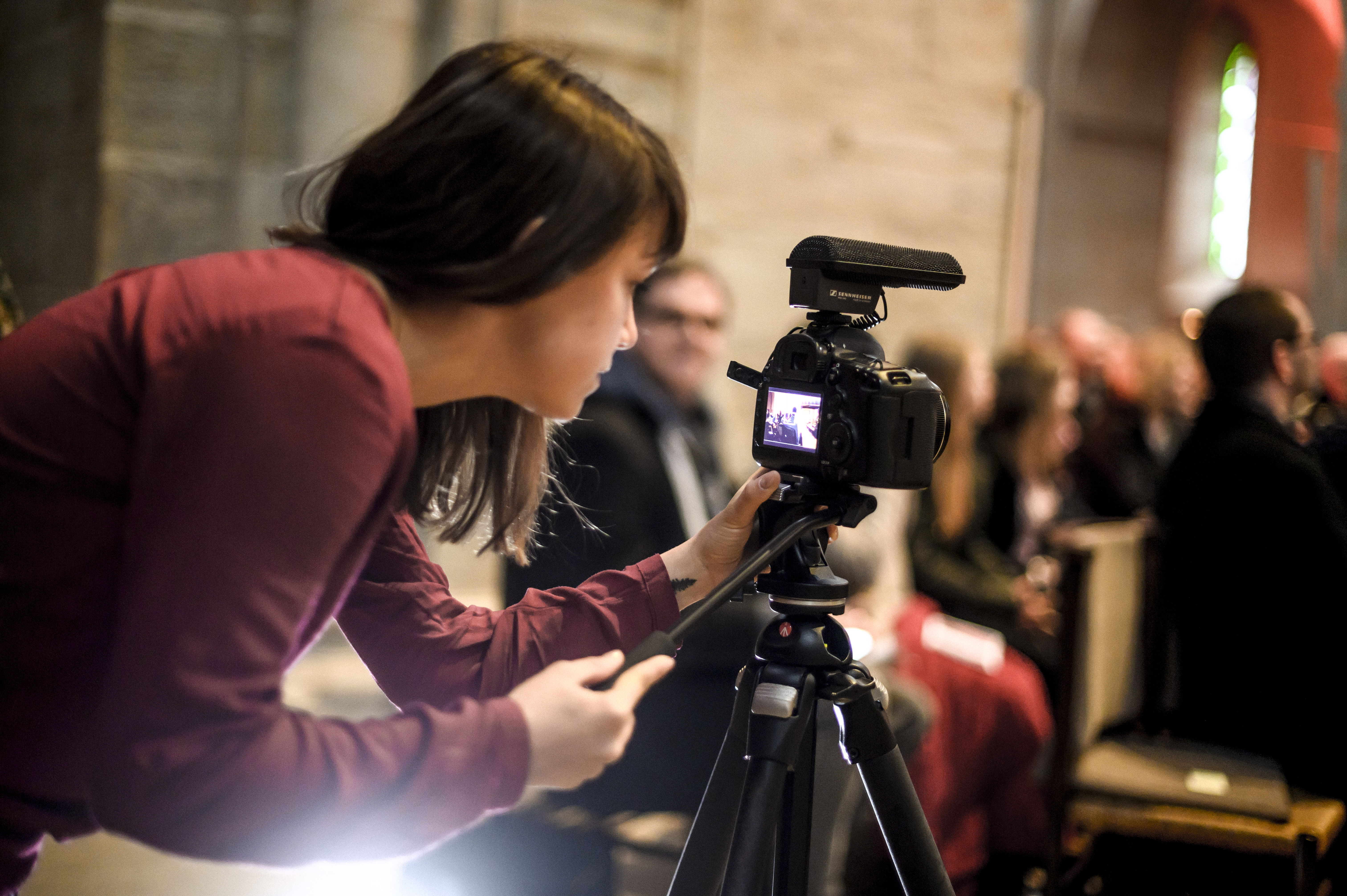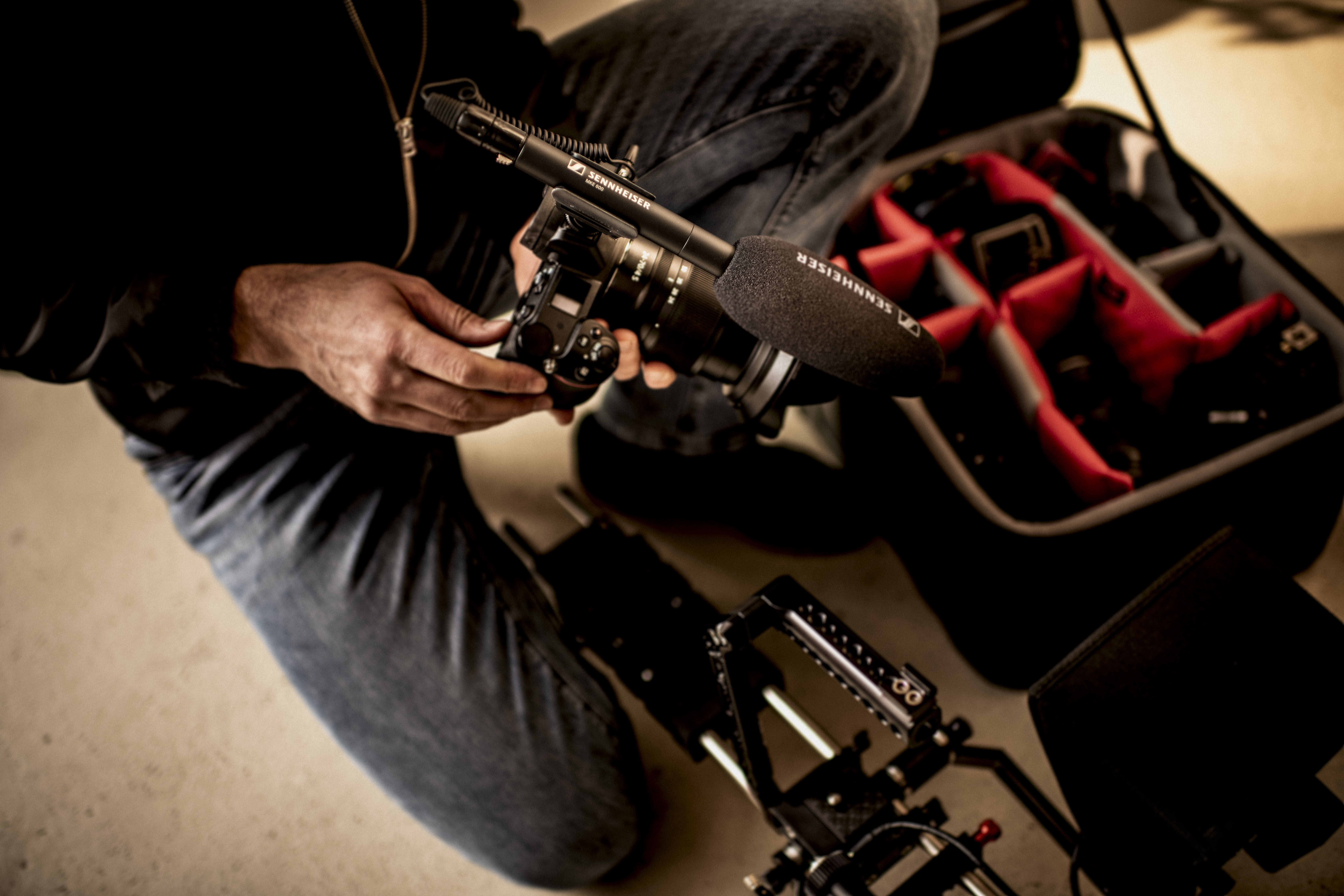“It’s their passion, their heartbeat that drives them to technology”

An interview with Robb Blumenreder, Commercial Manager – Audio for Video, and Tobias von Allwörden, Head of Portfolio Management – Audio for Video with Sennheiser
Robb Blumenreder, how do you define audio for video? Where do you draw the line with the professional user?
RB: “It’s an interesting question because most would think it’s a definition related to product, but we rather differentiate according to what drives users towards technology. Creators who use audio for video gear are generally self-funded, they invest in technology because they want to improve the quality of the content they share with their online community. It is their heartbeat, their passion that drives them to technology, to explore the next step in their journey as a content creator. For the professional broadcaster, on the other hand, technology is part of the job, they simply have to have it, it’s a given.”
In your own experience, is audio still underestimated?
RB: “Quality audio can still be underestimated but it’s constantly at the top of the list for viewer engagement requirements. Simply having a microphone – like what’s built-in to most cameras or smartphones – isn’t good enough if you want to really engage your audience with your content. Once you peek behind the curtain, you can discover that there is so much more that can happen to your content once you appreciate that audio is part of the art.
As human beings, we tend to gravitate towards visual aspects that hold our attention, audio is often ‘just there’. However, there’s a certain threshold of quality needed to engage audiences; content creators need to ensure that the audio contributes to the experience instead of distracting from it. You need to ask yourself: ‘Is the audio representative of all the effort and the passion I am putting into a video as a whole?’”

Tobias von Allwörden, a study by Richardson et al. [1] states that “participants self-reported greater involvement for watching video relative to listening to auditory scenes” but that “stronger physiological responses were recorded for auditory stories”. The researchers interpreted these findings “as physiological evidence that the stories were more cognitively and emotionally engaging when presented in an auditory format.”
[1] Source: Richardson, D. C., Griffin, N. K., Zaki, L., Stephenson, A., Yan, J., Curry, T., Noble, R., Hogan, J., Skipper, J. I., Devlin, J. T. (2018). Measuring narrative engagement: The heart tells the story. BioRxiv, 351148. https://doi.org/10.1101/351148
TvA: “Perhaps we are not as video-driven after all! The sense of hearing is the first human sense to develop, it’s always on duty, it can never be turned off. Hearing is also the fastest sense that we have. Auditory information almost always carries emotions: the way you say something, whether friendly or angrily, the music in a horror movie… It also subconsciously triggers a myriad of memories, and all of that in just an instant! To create and convey all these subtle nuances in a video, you really depend on the audio being good. And as Robb mentioned: The overall quality of a piece of content is like a calling card for the creator. Poor audio quality is detrimental to the content, to the storytelling, to the overall image.”

From your experience, what are the most common audio mistakes that can happen in the field?
RB: “First and foremost is mic placement, whether recording indoors or outdoors. You usually know where to put the camera to get the best shot and catch what is important. But just as important is the right placement of the mic to capture optimum sound.
Second is doing whatever you can to provide a controlled environment for the microphone to be able to do its job. We all know that content isn’t created in soundproof booths that are treated for perfect acoustics – that wouldn’t be such an exciting location to shoot. So, learning to protect the microphone capsule from pops, plosives, bumps and wind noise will help ensure the captured audio is clean and clear, regardless of the environment.”
What about the gain?
RB: “That’s actually No. 3: You need to take the time to find the optimum settings for the audio section of your camera or recorder, even if you think of a microphone as being a plug-and-play device. The time you invest in exploring the equipment fully will help you to use the full potential of your audio products. Microphone gain is easy to understand when you draw a camera analogy: When the audio is too loud and starts clipping, it’s like the aperture of your camera being open too wide. You need to let less light in so you don’t overexpose your image – similarly, if your audio is distorting, you need to reduce the gain on your audio settings and let less volume in.”
What can content creators do to overcome these challenges?
TvA: “Regarding mic placement, one easy rule of thumb is that you should try to get close to your sound source. This will ultimately also make you choose different types of microphone for different use cases. But there are also good allrounders, such as the MKE 440 on-camera microphone for DSLRs/DSLMs, which will work for most content creation applications. Due to its special shape, the MKE 440 will record mainly from the camera direction and add a pleasant amount of ambience for the natural experience. It also has the added advantage of capturing stereo sound.
When filming outdoors, you need a furry windshield to protect your microphone. These are available in various sizes from really tiny for clip-on mikes to really big for shotgun microphones, where they are combined with a basket windshield. Most microphones for videographers, such as the MKE 600 or the MKE 440, have filters that can additionally be activated to reduce low-frequency noise such as wind noise and the sound of footsteps. But the furry windshield is a must.

If you are filming with a wider camera angle at a distance from a speaker, an on-camera shotgun microphone might be a good solution. Or you decide to go wireless, and mike the speaker with a clip-on or a headset microphone. Again, you will need to pay attention to mic placement, especially with the clip-on microphone. You need to ensure that the clothing does not rub against the mic, and position it at a distance of about 20 cms from the mouth. An omni-directional pick-up pattern is best, as it suppresses wind noise better, and moving your head will not result in level changes.
Gain – or sensitivity – is a topic that moves professionals and amateurs alike. If we put it in a simple way: You need to determine the best volume level for your video, and that depends on the mic, the camera and also on the speaker! If you create content with someone who is speaking very loudly, you will need to reduce the sensitivity or gain, and increase it with soft voices. The audio settings on your camera or recording device are essential, you need to match the mic to the camera or recorder before you can even start to worry about the speaking volume of your interviewee. However, there are also microphone systems like our AVX which remove this second step: once the system has been matched to your camera, it will automatically set the correct gain for the interviewee.”

A study by the University of Southern California and the Australian National University has revealed that audio quality has a huge impact on “whether people believe what they hear — and whether they trust the source of information” [2].
[2] Source: Gersema, E. (2018, April 17). The quality of audio influences whether you believe what you hear. [Press Release] Retrieved from https://news.usc.edu/141042/why-we-believe-something-audio-sound-quality/; Newman, E. J., & Schwarz, N. (2018). Good Sound, Good Research: How Audio Quality Influences Perceptions of the Research and Researcher. Science Communication, 40(2), 246-257. https://doi.org/10.1177/1075547018759345
RB: “I would fully support these findings. Indeed, the quality of audio is directly linked to the attention span, especially when audio is on its own, not accompanied by a video or graphics or whatever. Let me give you an example. When you receive a phone call from someone you do not know, the first moment is important. When the quality of audio is good and the speaker’s voice nice, you will listen at least for a moment and then decide whether you should hang up or continue listening. But when you pick up the phone and the background noise is disturbing, the audio quality is bad, the sound is in and out, you will stop paying attention immediately. The quality of audio immediately links to the credibility. When having distracting noise interrupting the audio, people will skip the video and keep on with the next video or content creator.”
In general, do you see a move towards more professional gear with videographers and content creators?
RB: “We see that shotgun microphones are becoming more popular as more and more people get into content creation and talk about their passion. They are used on camera, smartphone rigs or for voice-overs. Depending on your needs, you might pick one style over another, but knowing you can interchange your investment across multiple platforms by using simple, cost effective accessories for connectivity options is a big plus.”
TvA: “The beauty of our portfolio is in its diversity, really – whether it’s the wireless Memory Mic for your smartphone, an ample range of on-camera mics for DSLRs and DSLMs or even broadcast shotgun microphones for those content creators who are professionalising their passion.”



